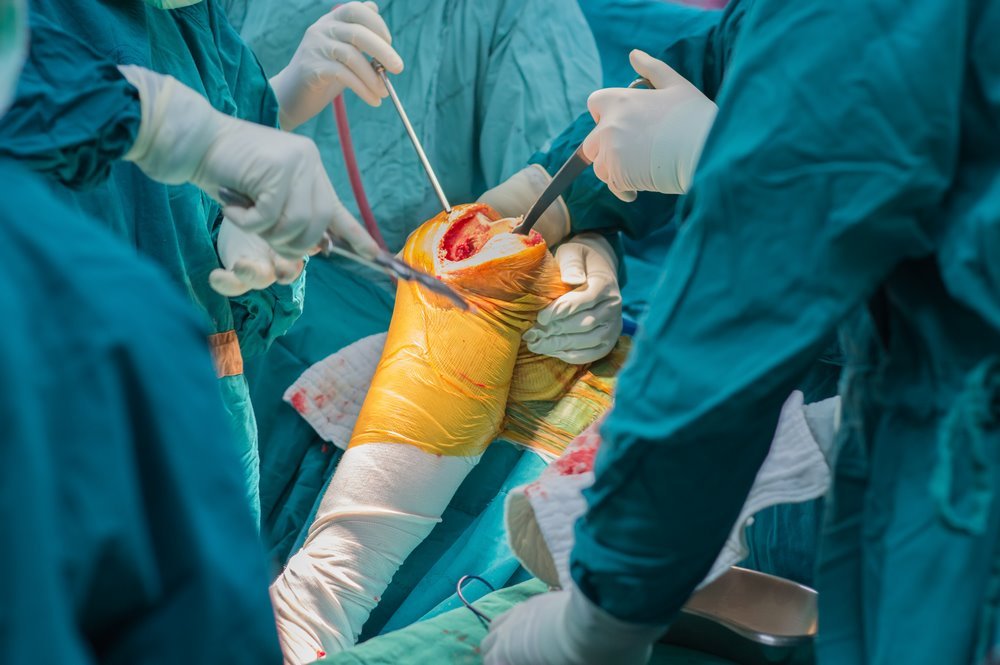During The Procedure

Knee replacement surgery needs you to stay in a hospital for a few days or a week. The whole procedure of knee replacement surgery varies depending on the doctor’s practices and the condition of the patient. The doctors mostly perform a knee replacement surgery when the patient is asleep under general anesthesia. The anesthesiologist discusses the risks of anesthesia in advance with the patient. In general, knee replacement surgery goes through like this:
- The doctors ask the patient to remove their clothing and wear a surgery gown before going in to the surgery.
- An intravenous (IV) tube might start in your hand or your arm.
- The nurses position you on the operating table.
- Nurse inserts a urinary catheter.
- If there is extra hair at the site of surgery, the staff shaves down that area.
- The anesthesiologist will regularly watch your breathing, blood oxygen level, blood pressure, and heart rate during the surgery.
- With the help of an antiseptic solution, the nurse cleanses the surgical site.
- The surgeon will make an incision at the surgical site.
The surgeons remove the damaged pieces of the knee joint and replace the knee joint with metal or plastic prosthesis. The most common in practice knee prosthesis is an artificial cemented prosthesis, but somehow they are now becoming less favorite for the surgeons. A cemented prosthesis joins to the bone by surgical cement. While an uncemented prosthesis joins to the bone by a porous surface on which the bone attaches to the prosthesis.
- The surgeon closes the incision with surgical staples or stitches.
- To remove any fluid from the incision site, the doctor places a drain.
- A sterile dressing or bandage then covers the incision site to help heal it.
Components of prosthesis:
The prosthesis consists of three components:
The tibial component:
- The tibial prosthesis resurfaces the upper portion of the shin bone or the tibia.
The femoral component:
- The femoral component resurfaces the end of the thighbone.
The patellar component:
- The patellar component resurfaces the lower portion of the kneecap that slides against the thighbone.
